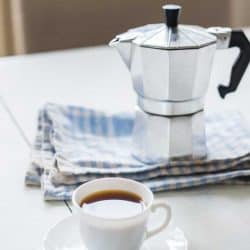As with anything that gets regular or daily use, percolators get dirty and require regular cleaning. There’s plenty of ways to go about cleaning them, and we’ve looked into the best and most efficient cleaning methods to keep that fresh coffee flowing.
If your percolator needs a light clean:
- Remove the lid and filters inside.
- Scrub with dish soap and water.
- Rinse thoroughly.
If your percolator needs a deeper clean:
- Add three tablespoons of baking soda and fill with water.
- Run one cycle with this inside.
- Fill with half white vinegar and half water, and run a cycle.
- Run cycles with clean water until it is thoroughly rinsed out.
We’ve gone over the simplest ways to clean your percolator, but there’s much more to it! We encourage you to read on as the rest of this post will break down the more complicated aspects of cleaning your percolator, as well as the pros and cons of glass or stainless steel coffee makers.
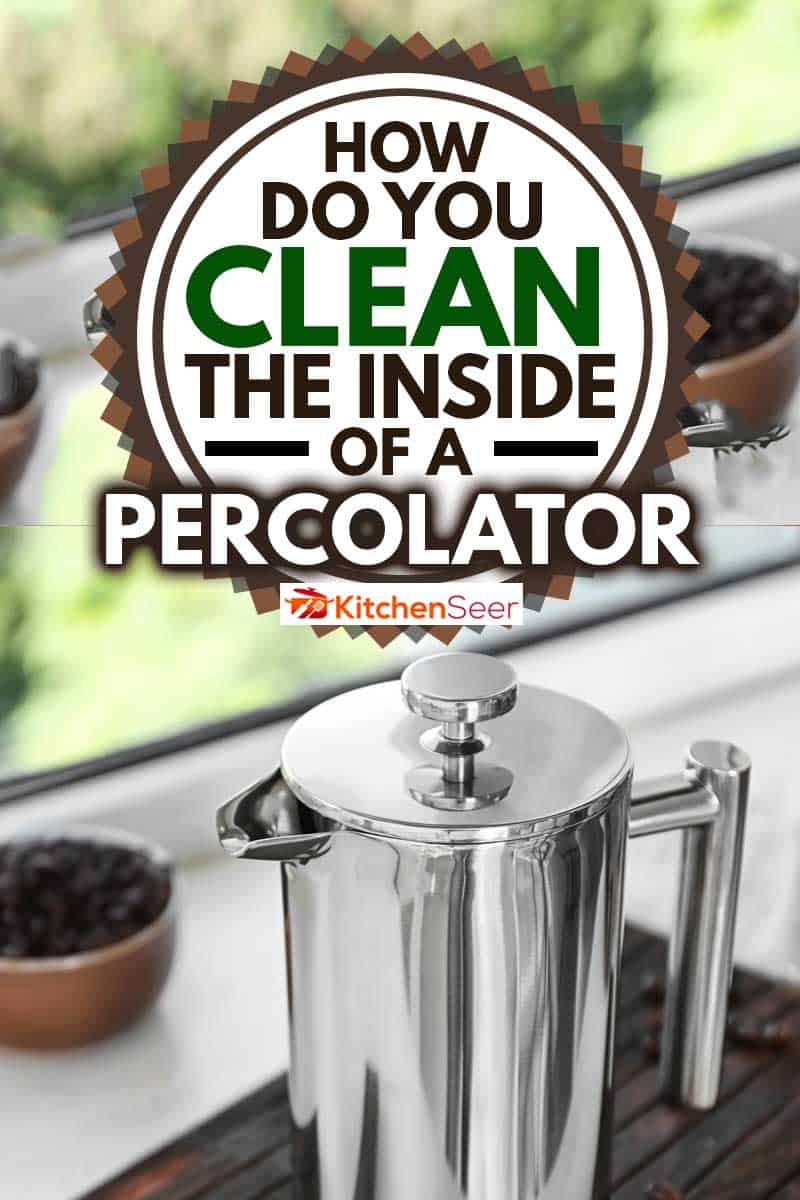
Basic Cleaning Of Your Percolator
Cleaning out your percolator is relatively easy and only requires a soapy dishrag. Make sure not to use anything too rough because this can end up scratching or damaging the percolator. Take off the lid, remove the filter and any coffee grounds left inside, and scrub it out with the rag. Rinse thoroughly, and you’re done!
Remove any clinging pieces of coffee by scraping them off with a butter knife. Make sure to be careful when doing this, so you don’t accidentally damage your percolator!
How to Clean Brown Stains Inside a Percolator?
If you’ve got brown coffee stains left inside your percolator after routine cleaning, it’s time to step it up a notch. Put three tablespoons of baking soda in your percolator and fill with water. Let it run and then cool down completely. Scrub out the percolator with a dishcloth, or some plastic scrubber if they aren’t coming off. This should remove those pesky brown stains.
If you're looking for a good scrubber, check out the Anvix soap dispenser and brush in one -
Click to see the Anvix on Amazon
If you’ve still got some lingering stains inside your percolator, we’ve got another solution. Remember to let the percolator cool between each of these cycles! Fill it up with half white vinegar and half water and let it run. Dump it out, refill it with the same mixture and rerun it. Then fill the percolator with fresh water and run a cycle. Repeat this process. Then, put half a cup of baking soda in the percolator, add enough white vinegar to make it start bubbling, then give it a shake and let it sit for a couple of minutes. Rinse out the percolator, and it should look brand new!
How to Clean Cloudy Glass in a Pyrex Percolators
Glass can become cloudy because of calcium deposits or liquid seeping into the microscopic cracks and fractures in glassware. There are a few ways to tackle cloudy glass, and we’ll go over them here.
- Fill your percolator with a mixture of water and white vinegar, let sit overnight, then rinse and scrub with a microfiber towel.
- Toothpaste can be used to remove some calcium deposits. Just dab it on your finger and lightly rub the spot, then rinse it off.
- Try a denture cleaner in a tub of water.
Manual Versus Dishwashing
So far, everything we have discussed has been methods of cleaning your percolator by hand. If you’re using a glass percolator, throwing it in the dishwasher is another viable option for everyday cleaning.
As with any other types of dishes and glassware, please make sure the one you’re using is dishwasher safe before cleaning it this way! Glass percolators are generally dishwasher safe. Stainless steel percolators are not always dishwasher safe, but some are, so check the manufacturer’s instructions before putting it in the dishwasher.
Glass or Stainless, What You Should Know
The above cleaning tips are fine to use regardless of whether or not you’re using a glass or stainless steel percolator. However, that doesn’t mean there are no differences. Here we will go over some quick things to be mindful of the differences between glass and steel.
Glass
- Generally dishwasher safe.
- It can become cloudy if not cleaned regularly.
- Easier to break during cleaning, be sure to go easy on it!
Stainless Steel
- It can be dishwasher safe, check with the manufacturer.
- It can still become stained from coffee buildup.
- Easier to scratch than glass but harder to break.
Does Vinegar Remove Coffee Stains?
Vinegar can be used to remove coffee stains from both cookware (as detailed above) and your clothes. Make sure always to use white vinegar when you’re going to use it for cleaning like this. For small stains on clothes, just put a few drops onto the stain and blot dry with a paper towel.
Does OxiClean Remove Coffee Stains?
OxiClean can remove coffee stains from most fabrics, including clothes and fabrics. OxiClean is not meant to remove stains from your percolator. If you’re looking to remove coffee stains with OxiClean, you’ll want to saturate the stain or fabric with OxiClean, and let it stand the prescribed amount of time.
Ran out of OxiClean? Amazon can deliver it to you within a day or two -
Click to order OxiClean on Amazon
Cleaning Your Percolator
After reading all of this, you should have no problems keeping the inside of your percolator clean, regardless of what type you’re using. Just follow the tips in this guide, and you’ll be fine.



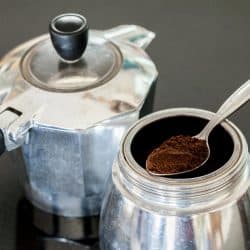
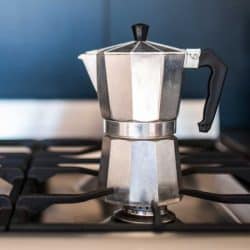
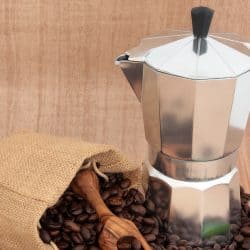
![A steaming percolator on a kitchen stove, How To Use A Stovetop Percolator [8 Easy To Follow Steps!]](https://kitchenseer.com/wp-content/uploads/2021/03/A-steaming-percolator-on-a-kitchen-stove-250x250.jpg)
